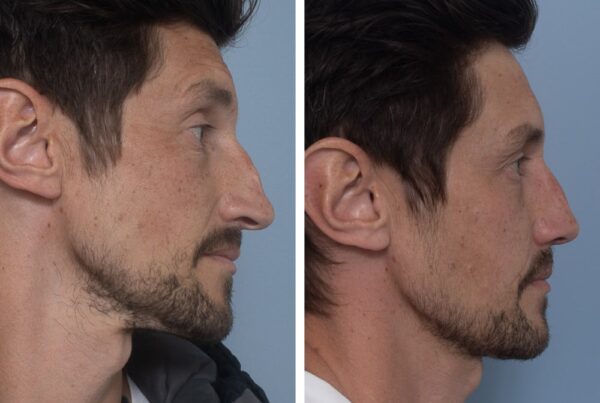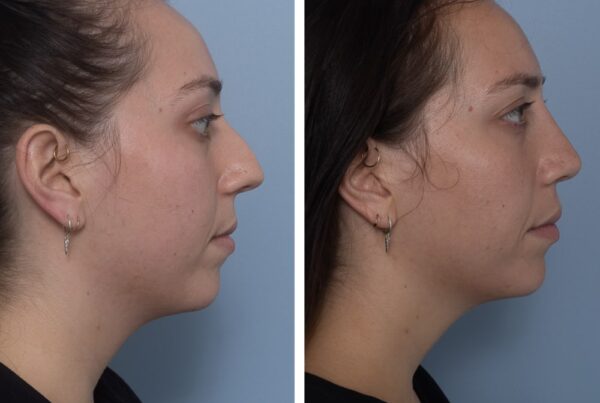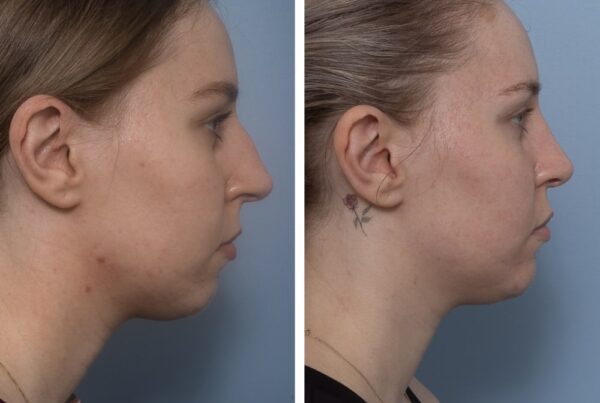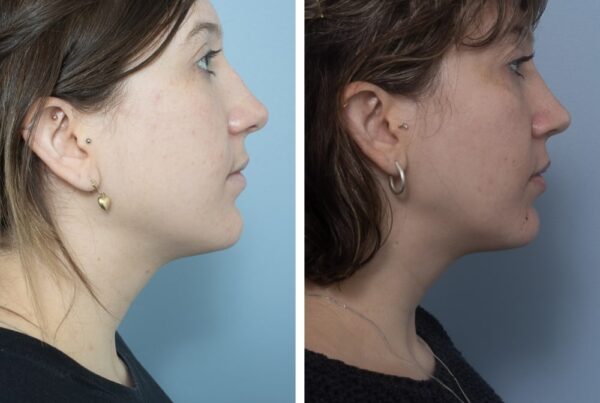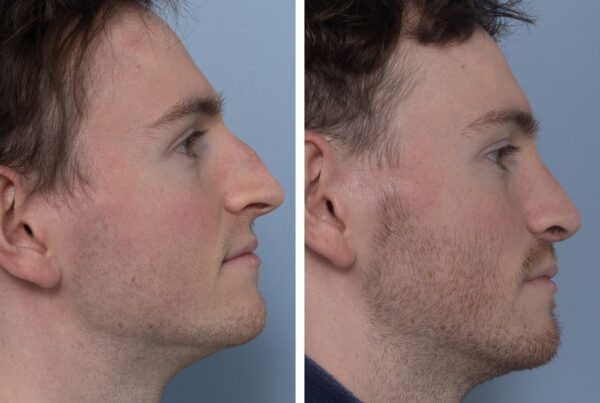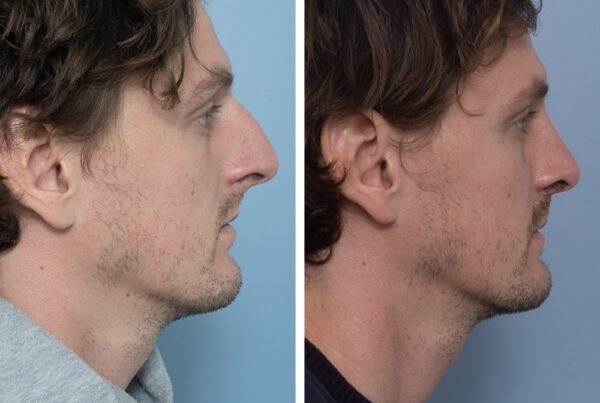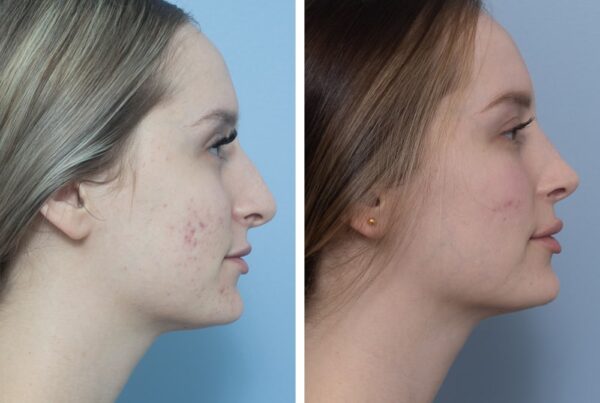Why consider a rhinoplasty?
People come along for rhinoplasty for different reasons. Sometimes concerned about how their nose looks; and that might have been because they have had an injury in the past, or it might just be that they were born that way. Others come because they don’t breathe well, and others still may have a combination of both.
About the procedure
Rhinoplasty addresses two things; Cosmesis (the look of your nose) as well as Function (how well you breathe).
It is important that these things are considered together. If you have problems with both, then we can make them both better! If you have a cosmetic concern only, we can’t compromise your breathing and vice-a-versa.
What happens at my consultation?
We will discuss what bothers you about your nose. It may be certain parts of your nose, different views (i.e. profile) or the whole thing! I’ll ask you about your breathing and we will discuss in detail the things that can be changed.
You will have photographs taken, including with a 3D camera, the Vectra which allows me to simulate the changes to the appearance of your nose during the consultation. This is very helpful in showing you what can be changed and helping you to understand any limitations on what is achievable with your nose. I will make sure we are both on the same page to ensure you are happy with the outcome.
We will discuss the surgery in as much detail as you wish to hear and we’ll talk about recovery. My assistant will talk with you about quotations and scheduling.
What is the down time after a rhinoplasty?
Most people are surprised how little down time there is with rhinoplasty surgery. Surgery is often day, sometimes a one night stay and initial recovery is fairly fast. There will be bruising and swelling that begins to settle after the first 3-4 days and by the time you come back to the office for your first visit at one week most of the bruising is gone and your stitches and splint comes off. I suggest two weeks off work but find that office-based work is often fine by about 10 days after your surgery. Gentle exercise can be resumed at two weeks.
The final result of a rhinoplasty is not properly seen until at least a YEAR after surgery. It takes that long for absolutely all the swelling to disappear. Fractions of a millimeter in swelling can be noticed on the nose, so it’s a long process!
Is there a Medicare or Health Fund rebate for a rhinoplasty?
Quite often. Once I’ve heard your concerns and examined you at your consultation I will assign item numbers where appropriate which will determine your rebate from your health fund or Medicare if you are uninsured.
Revision Rhinoplasty?
Sometimes people have had surgery on their nose in the past and they are not completely happy with the result. It may be that they still have concerns about the appearance of the nose or there may be difficulty with breathing or both.
Some aspects of the nose can be changed and others are more challenging when rhinoplasty surgery has already been performed. My job is to help you understand what is realistically correctable. I will use photographs with the 3D camera, the Vectra to highlight this to you.
How is revisionary rhinoplasty different?
Revisionary or re-do rhinoplasty surgery is more challenging for a few reasons. There is scarring from previous surgery that makes the surgery technically more challenging. There is often not as much cartilage available at the back of the nose to use as a graft or ‘building material’ for correcting things either. This means that sometimes I need to borrow some from another site such as the back of the ear or a rib.
FAQ
Is rhinoplasty surgery painful?
In the early recovery period after rhinoplasty, swelling, bruising, and possibly minor bleeding may occur. Discomfort levels vary among patients, but typically it’s reported as mild. Some patients experience feelings of congestion, causing them to breathe through the mouth leading to dry throat and lips. Additionally, pressure in the ears and head may be present due to congestion. However, these symptoms can be effectively managed with over-the-counter medications.
Who is a good candidate for rhinoplasty?
A good candidate for rhinoplasty (nose surgery) is someone who is physically healthy, psychologically stable, and has realistic expectations of the procedure. Rhinoplasty can help improve both the appearance and function of the nose in a single surgery. An experienced plastic surgeon can evaluate your specific case and determine if you’re a good candidate for rhinoplasty.
How long is the recovery process after rhinoplasty?
The recovery journey after a rhinoplasty procedure is a unique experience for each individual, with a typical duration of several weeks or months. Most patients can resume their daily activities or return to work within 7-10 days after the surgery. As the body heals, there may be some swelling and bruising, but this is a normal part of the recovery process and will gradually subside over time. The full healing of the tissues and resolution of swelling can take up to a year or more, but following your plastic surgeon’s postoperative instructions can help ensure a positive and smooth recovery.
What should I consider before a rhinoplasty?
Before undergoing a rhinoplasty it is essential to have clear goals and to choose a qualified, experienced surgeon who specialises in rhinoplasty. Openly communicate your expectations and concerns during the consultation and carefully listen to the potential risks and complications associated with the procedure. Ensure you are in good overall health, have realistic expectations of the time it takes to reach the final result of your surgery, and are prepared for the recovery process, including downtime and activity restrictions. Consider the financial aspects, arrange for a support system during the initial recovery, and be mentally prepared for the emotional aspects of undergoing surgery that alters your appearance. Thoroughly research, weigh the pros and cons, and make an informed decision with the help and guidance of your surgeon.
What could be the side effects of rhinoplasty?
Potential side effects of rhinoplasty include temporary swelling of the nose eyelids and sometimes the cheeks, bruising, pain, and nasal congestion. There will be some numbness of the nasal skin (especially around the tip) that should recover fully by around 6 months post op. Scarring from open rhinoplasty is usually good but can be a little red for a few months. Other complications such as infection, bleeding, asymmetry, breathing issues, and anaesthesia-related complications are also possible. One of the biggest considerations for any patient undergoing a rhinoplasty should be a circumstance where your results do not quite meet expectation. This is why it is important to feel that your surgeon understands your goals and has the experience to deliver them but also to help you to understand the limitations of surgery. Discussing these risks with your surgeon, listening to their guidance, and choosing an experienced rhinoplasty surgeon can help manage and mitigate these potential complications for a smoother recovery and better outcomes
Do all plastic surgeons perform this procedure?
No, not all plastic surgeons perform rhinoplasty. While many plastic surgeons are capable of performing the procedure, rhinoplasty is a complex surgery that requires specialised expertise in nasal anatomy, aesthetics, and functionality. Individuals seeking rhinoplasty should prioritise selecting a specialist plastic surgeon with a strong focus on rhinoplasty whose experience increases the likelihood of achieving desired aesthetic and functional outcomes.
